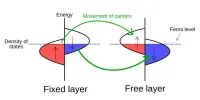J. Robert Oppenheimer tells Albert Einstein, “When I came to you with those calculations, we thought we might start a chain reaction that might destroy the entire world,” at the end of Oppenheimer and the opening of several Oppenheimer remixes. “What’s the deal?” Oppenheimer says, “I think we did,” in response to Einstein’s question.
Naturally, Oppenheimer is speaking figuratively when he talks about how the world is starting to arm itself to the teeth with weapons capable of destroying the planet multiple times. However, as mentioned in the movie, physicists were worried that the explosion could kill the globe by setting the atmosphere on fire before the first nuclear bomb was detonated.
The main worries were that a reaction might become sustained, as it does in the Sun, according to theoretical physicist Edward Teller, who voiced these worries during a recruitment meeting in California.
“Teller feared that a fission bomb’s detonation process might involve rapid local heating of the atmosphere in which,” according to a recently published paper on the subject, “because of a possible lack of cooling capability, the temperature might rise to such a point that the 14N nitrogen nuclei in the atmosphere might fuse or with other light atmospheric isotope components, such as 1H hydrogen, 12C carbon, or 16O oxygen.”

The best physicists available at the time worked on the Manhattan Project to solve it. In an attempt to obtain answers, Oppenheimer rode the train to see radiation physicist and Nobel Prize winner Arthur Compton in 1942. Alternatively, the most optimal solutions are obtainable without relying on experimental evidence (exploding a large bomb and observing if the planet catches fire).
Years later, Compton recalled the discussion and talked about Oppenheimer’s concerns.
“Hydrogen nuclei are unstable, and they can combine into helium nuclei with a large release of energy, as they do on the sun,” Arthur Compton told American Weekly in 1959.
A very high temperature would be required to start such a reaction, but may the atomic bomb’s extraordinarily high temperature have been exactly what was needed to explode hydrogen?”
Additionally, there was a chance that the oceans may experience the same event.
“What about hydrogen in seawater, if any? Could the detonation of the atomic bomb trigger an explosion within the ocean? Furthermore, Oppenheimer’s fears went beyond this. Though not as much, the nitrogen in the air is likewise unstable. Could an atomic explosion in the atmosphere not also trigger it?”
Of course, this would end the conflict, but it would do it a little too permanently, as the reaction that would follow would kill man, woman, and fish.
Compton went on, “It would be the ultimate catastrophe.” “Better to accept the slavery of the Nazis than to run the chance of drawing the final curtain on mankind.”
Compton, however, informed Oppenheimer that atmospheric circumstances would prevent it from happening. Teller then published a classified paper that was kept secret until 1979, stating that radiation cooling would always be too rapid for such a reaction to be sustained.
“The energy losses to radiation always overcompensate the gains due to reactions,” the scientist said in the paper. He continued, “It is impossible to reach such temperatures unless fission bombs or thermonuclear bombs are used which greatly exceeds the bombs now under consideration.”
We now know that nuclear explosions do not cause prolonged reactions in the oceans or atmosphere, based on experimental evidence, including tests that created “forbidden” quasicrystals. But as Michael Wiescher and Karlheinz Langanke’s recent research makes clear, the first teams overlooked an important response. Given the amount of nitrogen in the atmosphere, they had been primarily concerned about 14N, but they had overlooked the 14N(n,p)14C reaction, which created an abundance of 14C.
“Because plants absorb this persistent carbon isotope through the carbon cycle, the radiocarbon peak in our atmosphere rapidly diminishes. Thus, over thousands of years, it becomes a component of all living elements,” the study finds.”This radiocarbon remains in our bodies, serving as a lasting reminder of the human hubris leading to the development of nuclear weapons that Oppenheimer wanted to caution against.”















